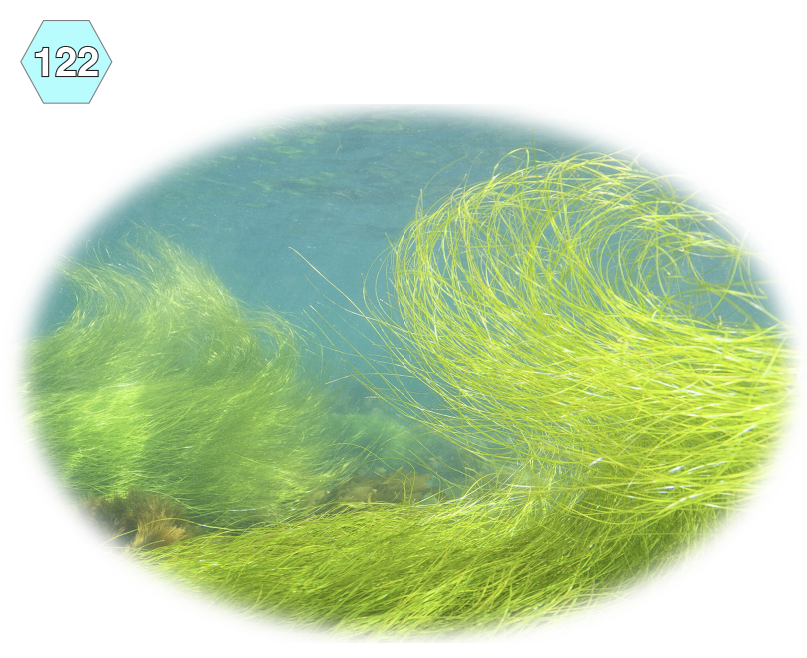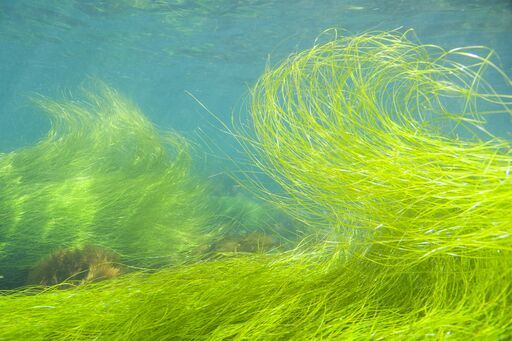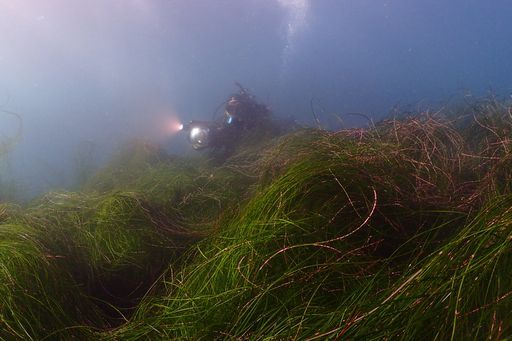
Eelgrass
Zostera marina
Physical Description
- A true flowering plant, not algae or seaweed.
- Long, bright green, ribbon-like leaves.
- Can grow up to three feet long.
Range
- Grows on both coasts of North America, as well as worldwide.
- From Labrador, Canada to North Carolina on the East Coast of North America.
- From southeastern Alaska to Baja California, Mexico on the West Coast of North America.
Habitat
- Grows in calm bays and harbors and open coastal areas.
- Can live in brackish to saltwater.
Reproduction
- All parts of the plant cycle, including flowering, pollination, and seed germination, occur underwater.
- The female flowers are fertilized by drifting pollen and develop into seed-bearing shoots.
- The shoots eventually break off, float to the surface, and release their seeds.
- Eelgrass can also reproduce asexually by growth and elongation of their rhizomes (underground stems) and formation of turions (wintering buds) that can grow into complete plants.
Diet
- Like all flowering plants, eelgrass needs sunlight, water, and carbon dioxide to grow via photosynthesis.
Predators
- Eelgrass is eaten by green sea turtles, brant and Canada geese, widgeon, and many ducks.
- Eelgrass used to be eaten by many Native Americans.
- Eelgrass blades are also covered in bacteria, diatoms, and detritus that are eaten by many animals.
Interesting Facts
- Eelgrass provides important nursery habitat for young animals. It stabilizes the shore, cleans the water, and provides food for many fish..
- Dried eelgrass has been used as stuffing in mattresses and chair cushions, roofing, and housing insulation for many generations..
Sources: NOAA; Seashore to Forest Floor; Cornell University; NRCS; Bayville; Chesapeake Bay Program; Maryland Department of Natural Resources
Photo: Matthew Meier

